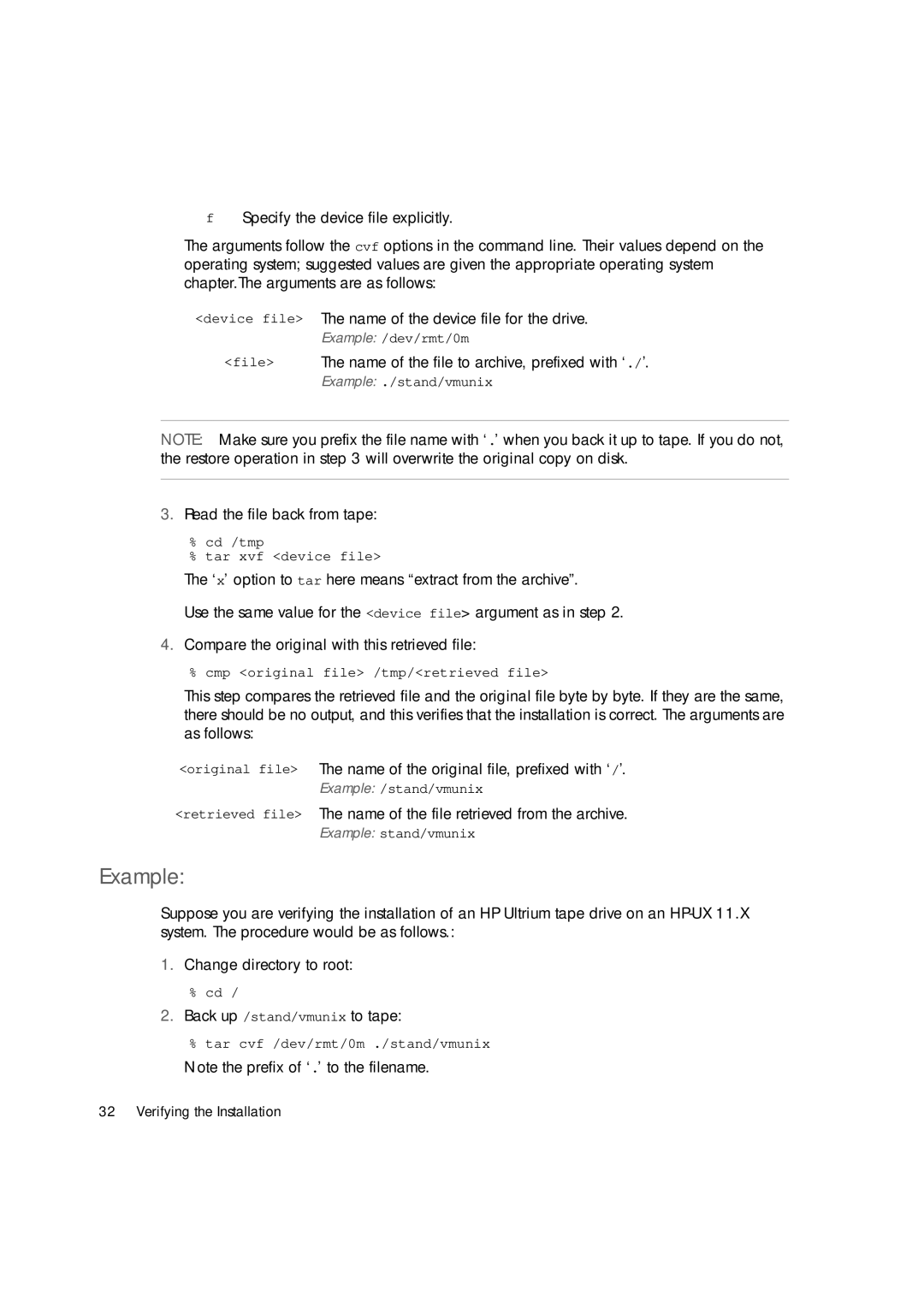
fSpecify the device file explicitly.
The arguments follow the cvf options in the command line. Their values depend on the operating system; suggested values are given the appropriate operating system chapter.The arguments are as follows:
<device file> The name of the device file for the drive.
Example: /dev/rmt/0m
<file> The name of the file to archive, prefixed with ‘./’.
Example: ./stand/vmunix
NOTE: Make sure you prefix the file name with ‘.’ when you back it up to tape. If you do not, the restore operation in step 3 will overwrite the original copy on disk.
3.Read the file back from tape:
%cd /tmp
%tar xvf <device file>
The ‘x’ option to tar here means “extract from the archive”.
Use the same value for the <device file> argument as in step 2.
4.Compare the original with this retrieved file:
% cmp <original file> /tmp/<retrieved file>
This step compares the retrieved file and the original file byte by byte. If they are the same, there should be no output, and this verifies that the installation is correct. The arguments are as follows:
<original file> The name of the original file, prefixed with ‘/’.
Example: /stand/vmunix
<retrieved file> The name of the file retrieved from the archive.
Example: stand/vmunix
Example:
Suppose you are verifying the installation of an HP Ultrium tape drive on an
1.Change directory to root:
%cd /
2.Back up /stand/vmunix to tape:
%tar cvf /dev/rmt/0m ./stand/vmunix
Note the prefix of ‘.’ to the filename.
32 Verifying the Installation
